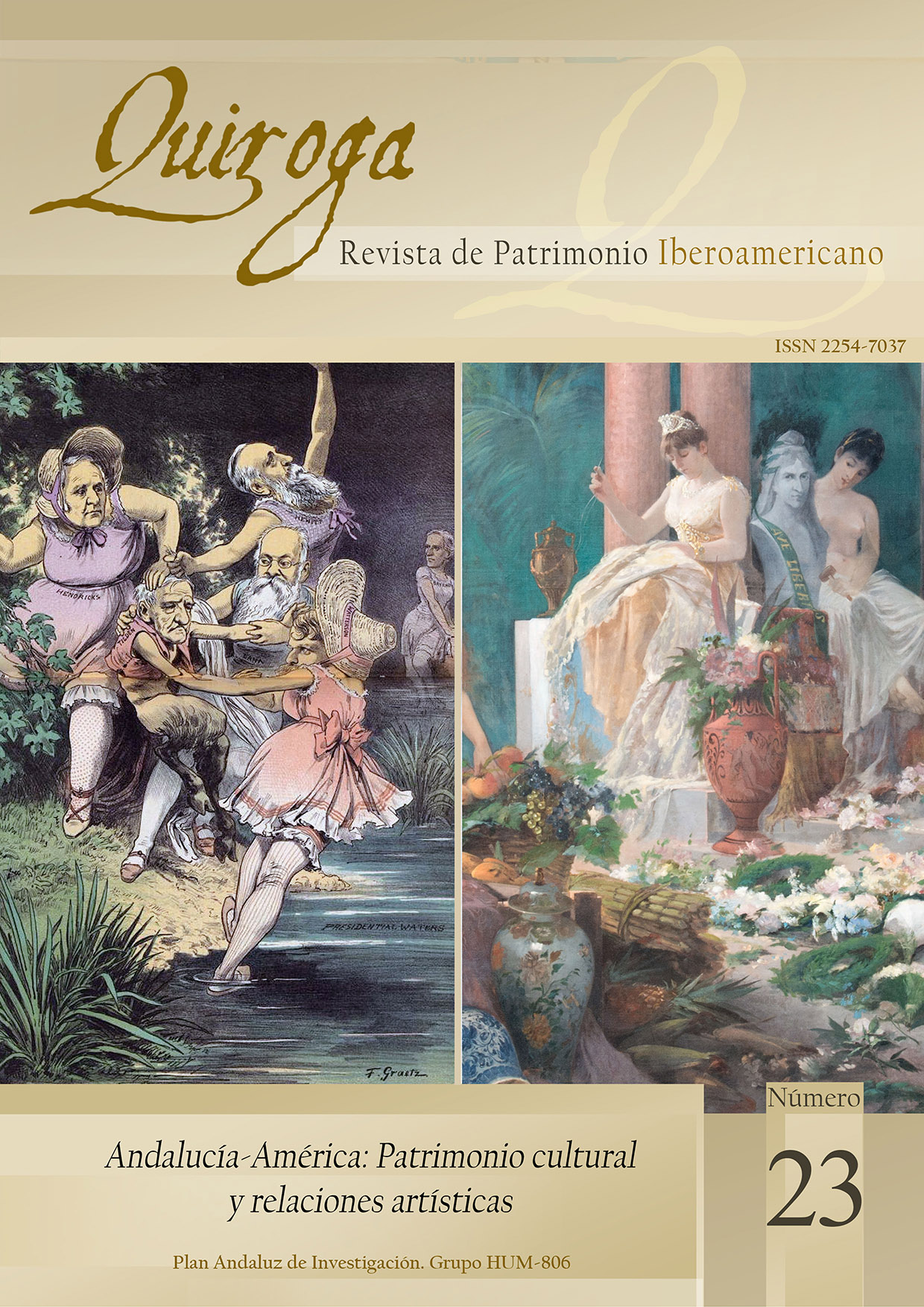The diptych of the death of Baldung Grien: where is, oh death! Your victory?
DOI:
https://doi.org/10.30827/quiroga.v0i23.0015Keywords:
Fates, Hans Baldung, Harmony, Interpretation, The Ages and DeathAbstract
This article aims to interpret Hans Baldung Grien’s diptych formed by the paintings known as The Harmony or The Three Graces and The Ages and Death (1541-1544), preserved in the Prado Museum, on the hypothesis that the three central female characters in both are really a representation of the Fates. Under this perspective, whole The diptych of death and each part, The birth of death and The death of death, it is proposed to renameDownloads
References
Biblia de Navarra, Pamplona: EUNSA, 2012.
BLANCO, Miguel Ángel, Reversos, Madrid, Museo del Prado, 2024.
BLISNIEWSKI, Thomas, «Kinder der dunkelen Nacht»: die Ikonographie der Parzen vom späten Mittelalter bis zum späten XVIII, Köln: Jahrhundert, 1992.
CHARBONNEAU-LASSAY, Louis, El bestiario de Cristo, Palma de Mallorca, Olañeta, 1997.
ELIADE, Mircea, Die Religionen und das Heilige. Elemente der Religionsgeschichte, Darmstadt: Wissenschaftliche Buchgesellschaft, 1966.
EMMENS, J. A., «Een Fabel Van Ariosto», Nederlands Kunsthistorisch Jaarboek (NKJ) / Netherlands Yearbook for History of Art, Leiden: Brill, 15, 1964
Erwin PANOFSKY, The iconography of Correggio’s Camera di San Paolo, London: Warburg Institute, University of London, 1961.
GARCÍA ARRANZ, José Julio, Symbola et emblemata avium: las aves en los libros de emblemas y empresas de los siglos XVI y XVII, La Coruña: SIELAE, 2010.
GIBSON, Walter S., «The Strawberries of Hieronymus Bosch», Cleveland Studies in the History of Art, 8 (2003), p. 24-33.
HIEATT, A. Kent, «Hans Baldung Grien’s Ottawa Eve and Its Context», The Art Bulletin, 65/2, (1983), págs. 290-304.
JANSON, Horst W., «The Putto with the Death’s Head», The Art Bulletin, 19/3, (1937).
MARCIAL, Epigramas, Madrid, Gredos, 1997.
OVIDIO, Metamorfosis, Madrid, Gredos, 2012, Libro XII.
PORTÚS PÉREZ, Javier, La Sala Reservada del Museo del Prado, Madrid: Museo del Prado, 1998
ROBLEDO Estaire, Luis, «El canto de cisne en Hans Baldung Grien», en Encrucijada de la palabra y la imagen simbólicas: estudios de emblemática, Palma de Mallorca: José J. de Olañeta, Editor, 2017.
STEFANIAK, Regina, «Correggio’s Camera Di San Paolo: An Archaeology of the Gaze», Art History, 16/2, (1993) págs. 203-238.
WEBER, Frederick Parkes, Aspects of Death and Correlated Aspects of Life in Art, Epigram, and Poetry: Contributions Towards an Anthology and an Iconography of the Subject : Illustrated Especially by Medals, Engraved Gems, Jewels, Ivories, Antique Pottery, &c, London: P.B. Hoeber, 1920.
Downloads
Published
How to Cite
Issue
Section
License
Copyright (c) 2024 Quiroga. Revista de patrimonio iberoamericano

This work is licensed under a Creative Commons Attribution-NonCommercial 4.0 International License.
(c) Quiroga. Los originales publicados en la edición electrónica de esta Revista son propiedad de la misma, siendo necesario citar la procedencia en cualquier reproducción parcial o total.
Salvo indicación contraria, todos los contenidos de la edición electrónica se distribuyen bajo una licencia de uso y distribución "CREATIVE COMMONS RECONOCIMIENTO-NO COMERCIAL 4.0 ESPAÑA" (CC-by-nc). Puede consultar desde aquí la versión informativa y el texto legal de la licencia. Esta circunstancia ha de hacerse constar expresamente de esta forma cuando sea necesario.













